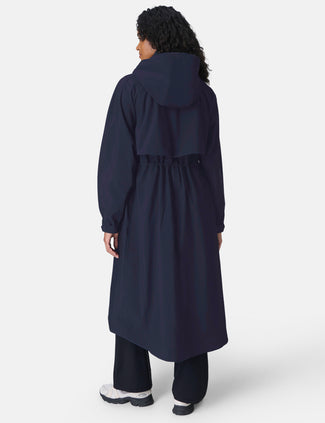By Linia Patel
Vegetables and fruit are good for you: fact. However, is shoving them into a machine to extract their juice good for you? Should we be running out to buy the latest juicer or will a handful of berries suffice? And what’s the deal with cold-pressed juice? Is it really better for you? If you do have a juice, what’s the best juice to have?

Whole foods vs juice
Eating more fruit and vegetables is one of the best things you can do to improve your health. They're packed with vitamins and minerals, and rich in fibre and other vital plant nutrients called phytochemicals. Time and time again research has shown that a diet high in vegetables and fruit protects against a multitude of diseases such as heart disease, cancer and obesity. The World Health Organisation (WHO) and current UK guidelines encourage eating at least five portions (around 80g in weight) of fruit and vegetables a day.
The reality is that it can be difficult for the majority of us to consume the recommended five or more servings in one day. In fact, recent surveys indicate that as a nation, only 15% of us actually achieve our 5-a-day. Perhaps juicing could be one easy way to make a dent in your 5-a-day target?
Sadly, not quite that simple. For starters, juicing counts as a 1 of your 5-a-day no matter how much you drink. The reason for this is that juicing loses most of valuable fibre found in the whole fruit. It also increases the free sugars, both which are kept intact before the juicing process. This can lead to an unwanted peak in blood sugar levels compared to eating the whole fruit and vegetables intact.
The good news however, is that some smoothies/blended juices can count as two portions depending on the amount of pulp (fibre) they contain. It therefore seems that the type of juice you choose to drink and when you choose to drink matters.
Juice so cool it’s hot!
Cold pressed juice is a big hit these days. I often get asked whether cold-pressed juice is nutritionally superior to other types of juice as the price tag certainly suggests that it would be. To understand the difference in nutrition value of different juices you need to know the machine that was used to make it!

Juicing is a process that extracts the juice from the fruit and vegetables, leaving the rest (i.e. the pulp). The two main types of juicers are the centrifugal juicer and the masticating juicer (cold press). Traditional juicers are centrifugal juicers. Centrifugal juicers use fast-spinning blades to tear apart the fruit and vegetables, but the process also adds some heat (for pasteurization) and exposes ingredients to oxygen.
Preservatives can be also added to the juice to inhibit bacteria formation during packaging.
Cold-pressed juice, on the other hand, is extracted using a masticating juicer. Fruits and vegetables are fed into a tube that has a corkscrew-like blade, which grinds and chews the produce to a paste. A masticating juicer is thought to extracting more juice per piece of produce than the traditional centrifugal juicer hence pressed juices will have more fiber. There is no heat used to preserve cold pressed juices which explains why most cold pressed juices have such a short shelf life.
Blending is when the whole fruit or vegetable is used. Blenders grind, mix or emulsify all of your ingredients together. What you put into a blender is what you consume. You can use anything from a standard hand held blender to higher end full size blenders
What does the science say?
Whilst there isn't any robust scientific evidence to prove superiority of cold pressed juice, it’s important to remember that a lack of evidence is not absence of evidence! We know that the water-soluble vitamins such as vitamin C are heat and oxygen sensitive, so in theory, more nutrients are retained in cold pressed juice because the juice is extracted via pressing instead of requiring high speed blades, and without heat. We also know that pressed juices will typically have more fibre and potentially less “free sugars” than conventional juices as well. However, the key is to become label savvy so that you can compare one juice to another in terms of fibre and sugar.

Recent changes in the WHO recommendations suggest that the average adult’s daily sugar consumption should be halved to six teaspoons of ‘free’ sugars (free sugars being those added by food manufacturers and those sugars found naturally in fruit juice and honey, for example) (2). As a point of reference, one glass (200mls) of 100% pressed apple juice contains 5 teaspoons of sugar (20g), which almost clocks up your daily free sugar intake for the day (3).
But that’s not to say you can’t get into juicing! There is definitely a place for juicing in a balanced diet. For starters it can help make a dent to you 5-a-day target. If you opt for a smoothie/blended juice you can get more bang for your buck in terms of fibre. If you are very active, the sugars in a fruit juice could help push up your blood sugar levels after a hard exercise session. However, for most us, most of the time water is perfectly adequate to keep us well hydrated before and after sport.
And let’s also not forget reaching for a pressed juice can provide a great pick-me-up and energy boost during an afternoon slump which is by far better than reaching for a caffeinated, high sugar and low nutrient item! The key is to maintain the balance between eating whole fruits and vegetables, and drinking them. This way you can retain valuable nutrients without trying to replace one for another.
Juice tips
If you choose juice, here are three tips on how to make the most of it:
- Go Veggie! To reduce the sugar content you should add more vegetable choices and limit your fruit portions to 1-2 per drink. You could also dilute your juice with added water to reduce the sugar load. Reading your label also helps you compare the sugar intake of one juice to the next.
- A place and a time for sugar: Fruit based juices will have a higher sugar content, so opt for these choices when your blood sugar needs a boost, for example before or after sport rather than with a breakfast or lunch. The lack of fibre in juice actually allows for easy digestion and absorption meaning that you get a quick hit of nutrients if you need a quick pick-me-up.
- Consider making your own. Invest in a good blender – particularly if you are serious about juicing. A good blender will have a stronger blade that will ensure that your juices retain more pulp and fibre. The blade will also withstand the addition of other ingredients like seeds that need to be broken up for you to get the full nutritional benefits. Have fun experimenting with different vegetables and fruit.
Linia Patel is a leading dietitian and sports nutritionist. She's passionate about empowering people to better manage their health and optimise their performance through learning the essence of healthy eating. Outside of work, Linia is a wannabe triathlete. Visit her website: www.liniapatel.com.
References:
- George T.W., Paterson E., Waroonphan S., Gordon M.H. & Lovegrove J.A. (2012) Effects of chronic consumption of fruit and vegetable puree-based drinks on vasodilation, plasma oxidative stability and antioxidant status. J. Hum. Nutr. Diet. 25: 477-487
- WHO. (2003) Diet, Nutrition and the Prevention of Chronic diseases. Report of a Joint WHO/FAO Expert Consultation. Geneva: World Health Organization
- Department of Health (2011) National Diet and Nutrition Survey: Headline Results from Years 1 and 2 (Combined) of the Rolling Programme 2008/9–2009/10.
Photo credits:





























































